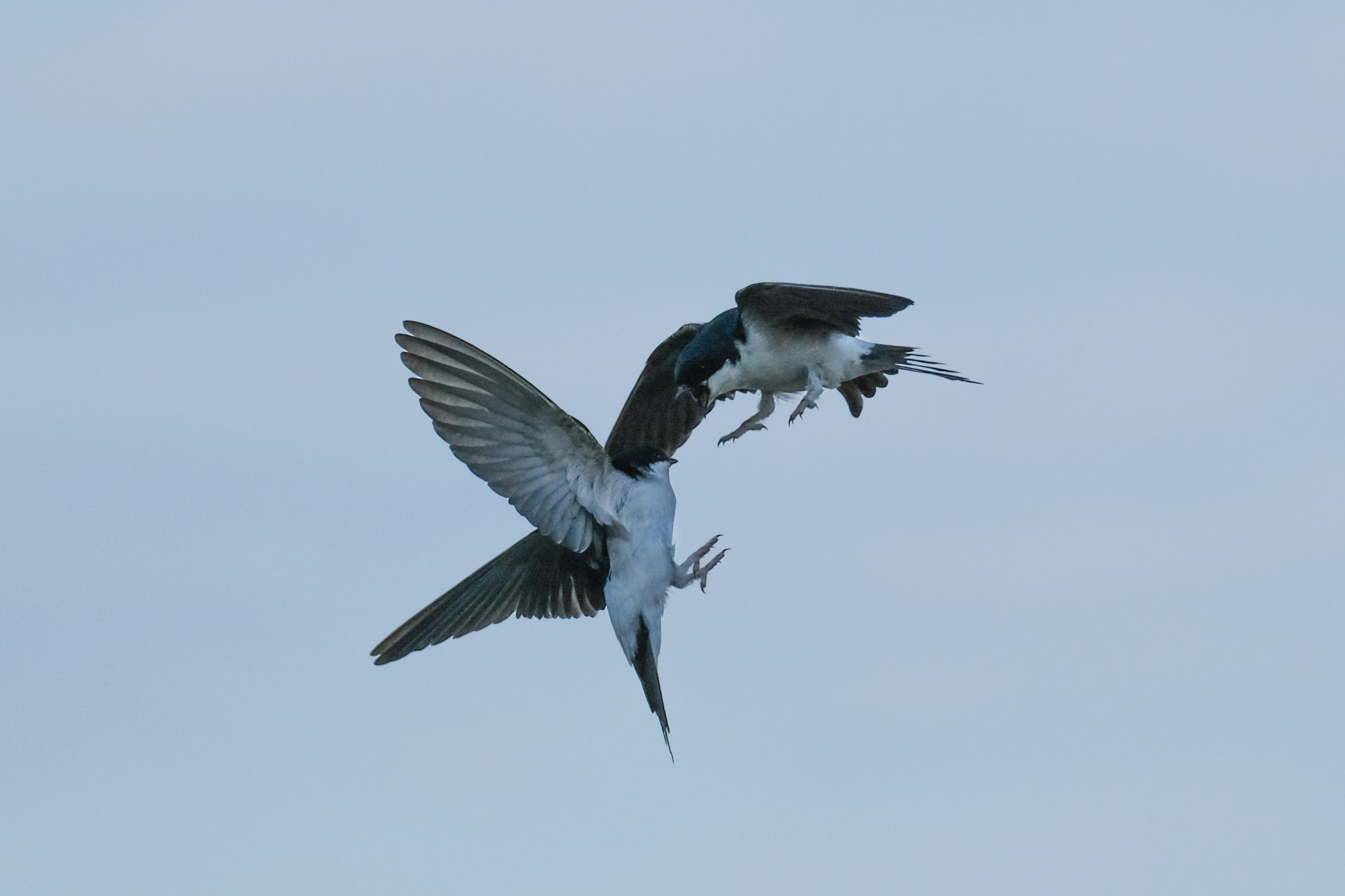FEROCIOUS AND PROMISCUOUS
THE SECRET LIFE OF HOUSE MARTINS
The oldest classic tale in the world “The Epic of Gilgamesh” from the Sumerian Civilization about 2000 years BC says: ``Let the flying birds establish nests in my home. Let their refugees refresh themselves in my shade``
Having experienced two consecutive breeding seasons in the middle of a mega colony of House Martins of about 400 pairs in Northern Iraq, these small glossy blue-black and white birds with ‘forked tail’ may look charming to a casual observer but look closely and one notices behavior that you would certainly not expect! During spring, the first wave of migrant House Martins on trek from sub-Sahara Africa can beseen against the rich green and brown hues of the mountain steppes of Northern Iraq. It is not too long before the air is full of sound from these true acrobats of the skies. At close view the birds’ legs can be seen to be feathery and is probably an adaptation to keep warm from high altitude flying during their journey.
Every April, a frenetic and wanton phase of the House Martins life begins – it’s a time to pair-up and build the mud nest that takes several weeks to complete and made cosy with a lining of sheep or goat hair inside. Immediately above the bedroom balcony I was able to stare into the inner sanctum of their conjoining nests and watch in awe the comings and goings of their private lives. An hour before sunset is a particularly captivating time to observe their antics before they ‘settle’ for the night. A particularly eye-catching moment is when a sudden noise or movement (or even the presence of a predator) will trigger a ‘dread’ where often the entire colony will rise up together from around the nests and swarm together in circles performing dramatic fly-bys then banking like fighter planes against the setting sun in the distance. Sunsets during spring in this part of the world are so rich in color and just spectacular.
It must be elevated testosterone that make the male birds either extremely passionate to the opposite sex or particularly aggressive with rivals during the period of pairing and mating – it isreally difficult to distinguish as males and females are alike! On several occasions it was witnessed high up in the sky a pair of House Martins grasping each other by the feet while facing away from each other and spin down like ‘a winged fruit of a sycamore tree’ – as if in preparation for a May Day dance – a peculiar behaviorundescribed in the scientific literature. Then at times, in flight, pairs of martins are seen to fight so ferociously they crash to the ground together and continue to battle unaware of what dangers there may be nearby. It is not surprising this fierce aggression towards one another can occasionally lead to death.
The construction of the nest in shade is critical to prevent the direct sun overheating the future nursery and for protection from the wind and rain. It was only during the last moments of sunset that the nests became sunlit creating a wonderful aura of orange and brown from out of the shadow. From dawn to dusk, activity is intense at the nest entrances where it seems any bird can make a visit resulting in endless squabbles and fights presumably with the owners. At times, an adult can be seen hanging motionless in the air (as if by a noose) at the nest hole – bizarrely, it is held from its head feathers by a bird inside the nest! What is most unexpected are the bedroom adventures where house martins mate inside their nests but are not terribly faithful to their partners – research shows that three-quarters of nests contain chicks fathered by another male! The female lays four or five eggs that take two to three weeks to hatch. The parents will actively remove broken shells from the nests. The chicks then spend up to five weeks in the nest fed almost entirely on small flying insects and spiders before they are ready to take to the wing themselves.
Just after sunset most evenings late in the breeding season, a Kestrel would appear soon to be mobbed by the maddening martins. The whole colony is up in arms as the Kestrel will select one unfortunate nest and, if lucky, pull out an unsuspecting chick through the entrance hole. By mid-June, the last breeding birds and young leave their home in preparation for the long journey back to Africa during autumn. An eerily stillness is now felt with the martins gone but kept alive with a few house sparrows who will take up residence in the vacant homes.


